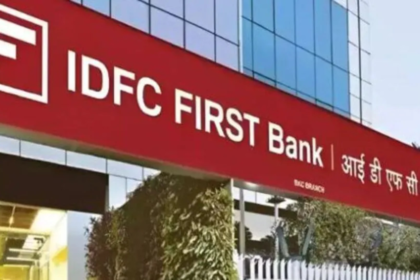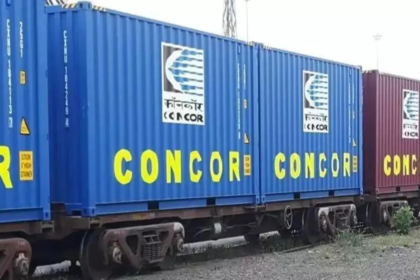D-Mart’s Revenue Breakdown (As of H1/25)
A. Food & Grocery:
– Generates 56.4% of total revenue.
– Includes staples, vegetables, cooking oils, and other daily essentials.
B. General Merchandise & Apparel:
– Generates 23.45% of revenue.
– Includes items like crockery, toys, garments, and home appliances.
C. Non-Food FMCG:
– Generates 20.15% of revenue.
– Includes home care, personal care, toiletries, and over-the-counter products.
Reasons Why DMart Crashed
“The Rise of Quick Commerce”
A Game-Changer
Explosive Growth:
– Quick Commerce Sales in India has surged by 280% over the last 2 years.
– Gross merchandise value (GMV) for quick commerce grew from $100 million in FY20 to $3.3 billion in FY24—a 33x increase in just four years
Why Quick Commerce is Winning:
Quick commerce’s asset-light model, characterized by leased dark stores and mother warehouses, allows for rapid scaling. Unlike D-Mart, which owns most of its physical stores, quick commerce companies can expand quickly without significant capital investments.
Their supply chain is optimized for speed:
– Orders are routed to dark stores within a 2–3 km radius.
– The order is packed and delivered within minutes, making it extremely convenient for customers.
For consumers in urban areas, this model has become the go-to solution for urgent and top-up purchases.
D-Mart’s Food & Grocery segment faced stiff competition from quick commerce platforms like Blinkit and Swiggy Instamart in metro areas.
Geographic Limitations: A Roadblock for D-Mart
While quick commerce is expanding aggressively, D-Mart remains geographically constrained.
– Most of its stores are concentrated in Maharashtra and Gujarat.
– There are no stores in East or Northeast India, where more than half of India’s population resides.
This lack of national presence limits D-Mart’s ability to tap into new markets, putting it at a disadvantage compared to competitors who are expanding pan-India.
Store Growth: Slow Expansion Raises Concerns
D-Mart’s growth strategy has traditionally been centered on adding new stores. The CEO has emphasized that sustained growth hinges on aggressive store additions.
However, the numbers tell a different story:
Annual Store Additions:
– FY21: 22 stores
– FY22: 50 stores
– FY23: 40 stores
– FY24: 41 stores
Half-Yearly Comparison:
– H1 FY24: 12 stores added
– H1 FY25: 12 stores added
In Q2 FY25, only six stores were added compared to nine in the same quarter of FY24, indicating sluggishness.
Like-for-Like Growth: A Slower PACE
Like-for-like (LFL) growth, which measures revenue growth in stores older than 24 months, has been declining:
– Q1 FY24: 8.1%
– Q2 FY24: 8.6%
– Q1 FY25: 9.1%
– Q2 FY25: 5.5%
While not a degrowth, the sharp decline in the growth rate is concerning. Historically, LFL growth was around 10% (FY12 to FY20). The current 5.5% highlights significant challenges in maintaining pace.
While D-Mart has cost advantages in their Food & Grocery Segment due to mass procurement, the lack of store growth, geographical limitations & most importantly the change in consumer preferences (people now prefer quick deliveries for their ordered items) has created problems for the company.
Tough Competition from Trent Ltd.(Zudio)
General Merchandise & Apparel segment, Once a high-margin category for D-Mart, is now under threat from aggressive players like Zudio, a Tata Group company:
– Trent has opened 200 new stores in 2024 alone, bringing its total footprint to 545 stores across 164 cities.
– With its focus on fashionable, high-quality, and low-cost apparel, Trent has captured the aspirational middle-class consumer, cutting into D-Mart’s market share.
Both Brands have proven their metal in the fiercely competitive Indian retail market.
D-Mart, with its loyal customer base, and Zudio, with its fast fashion model and premium shopping experience, are in accord with younger consumers who are driving the future of retail!
The Road Ahead
“Is D-Mart Finished? or Will the trend Reverse?”
D-Mart’s price-sensitive model, focused on being the lowest-priced retailer, has secured a stronghold among India’s 50–55 crore middle-class population. For middle-class Indian population, price is
a very big factor and in some cases “It’s the only Factor”!!
D-Mart’s Mission – To be the lowest-priced retailer in the area of operation/ city/ region
80 crore people in India take free ration from the govt. and the remaining 50-55 crore people who are in the middle class prefer to buy their goods from grocery stores like DMart!
So, D-Mart is far from being “finished”. Its foundational strengths—cost advantages and consumer loyalty—remain intact. However, changing consumer behaviors due to quick commerce
platforms and the growing preference for online grocery shopping are
presenting challenges.
While DMart excels in offering affordable prices, convenience is becoming a key driver for grocery purchases, especially for the urban upper-middle class and affluent segments.
Possible Strategic Shifts
1. Adopting Quick Commerce:
DMart attempted its online venture, DMart Ready, but faced operational losses (~₹140 crore on revenue of ₹1,600 crore). Despite its cautious approach, management may need to reevaluate quick commerce as a complementary strategy, balancing risk with potential scale.
2. Franchise or Lease Models:
To overcome scalability hurdles, DMart could explore leasing stores or franchising. This would reduce capital strain while allowing faster expansion to meet rising demand.
3. Hybrid Model for Growth:
A combination of physical stores and a strong online presence could address both price sensitivity and convenience, ensuring relevance in a competitive landscape.
What do you think— Will D-Mart be able to turn its fortune and come back again? Drop your thoughts in the comments!







